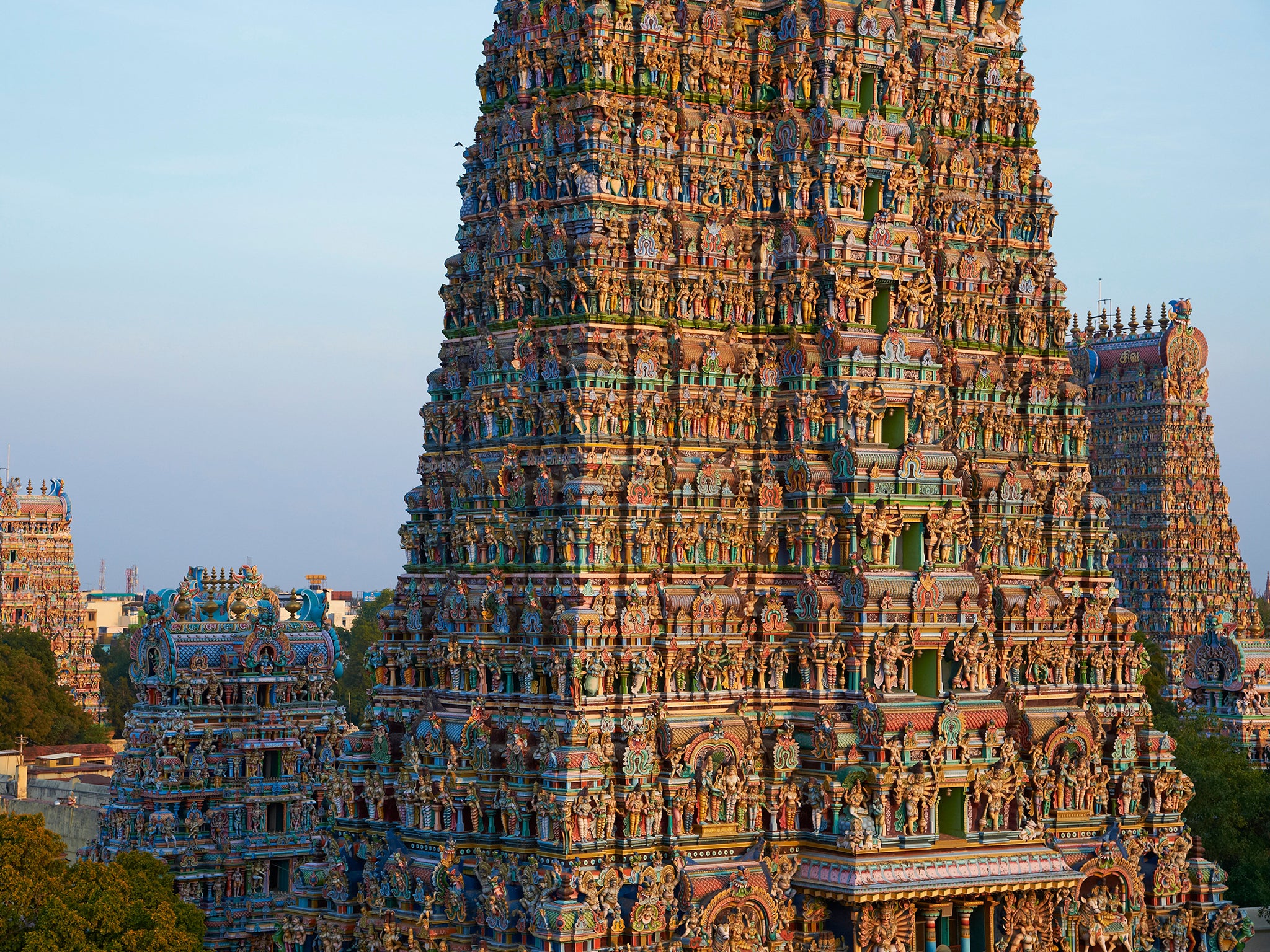The terracota guardians of Tamil Nadu
The southern Indian state is home to dozens of well-hidden shrines and temples, where ceramic horses lie in wait

A narrow path winds into the forest and round an ancient water tank. A couple of monkeys are prowling along the edge, eyeing me warily. Suddenly, one of them leaps in front of me and lands on to the back of a giant horse. Among the trees I hadn't noticed it, but turning the corner there's a whole avenue of them flanking the path to a temple. Not real horses, of course, but huge terracotta steeds towering above me, with pointy ears, bulging eyes and open mouths. Some are facing towards the shrine and others are side-on, staring at me as I walk along the path.
Close to the temple are lots more terracotta horses, smaller and many of them painted. There are also human figures with extravagant moustaches and headgear, seated sages with garlands and metal tridents stuck in the ground. I'm on my own, but I can feel dozens of eyes watching me. It's like suddenly stepping into a Narnia world of magical landscapes and mythical beats.
This is an Ayyanar shrine in Tamil Nadu, South India. Almost every village has one, but this, called Urepatti, in the village of Narthamalai, is one of the most spectacular. Ayyanar is a folk god who rides a white horse and protects the villages from evil spirits. The temples are usually on the edge of a village, by a water tank or in a sacred grove. At night Ayyanar is said to patrol the village on horseback - everyone says not to stay after dark.
Tamil Nadu is renowned for its magnificent stone temples: the masterpieces of the Pallavas at Mahabalipuram, the Cholas at Thanjavur and the huge temple of the goddess Meenakshi in Madurai and more. The guide books are full of them, yet there's nothing about these humble, yet enchanting, Ayyanar shrines because they are hidden away in remote villages and few people know where to find them. So all credit to The Bangala heritage hotel in Karaikudi, whose library has some valuable books on the shrines and sacred groves, and to Mothu Krishna, the hotel's driver, who knows where they are.
Narthamalai is a magical landscape of small villages, rice paddies and ponds amid bulbous outcrops of granite. About 10 minutes' drive from that first Ayyanar shrine with the huge horses, there's a 9th-century Jain temple built of stone and impressively positioned on the other side of the hill. On the way up there's a clump of trees to the right and beneath is one of the most secret of Ayyanar sites. Unless you knew it was there, you'd miss it. A peacock beats a retreat, like a dowager trailing a long green dress.
Each temple has its annual festival, usually between April and July, and villagers donate painted terracotta animals for good fortune, or for specific requests - and in thanks when those requests are granted. They are placed in lines looking into the sacred space. Horses are most popular, because Ayyanar protects the village on a horse, but there are also horned cows with bumps on their backs - just like those that wander the roads - and elephants with curling trunks. Over the years, these creatures decay beautifully, the garish paint fading and wearing down to the terracotta itself, which gets covered with moss and lichen or wound with creepers. The heads break off, lizards and monkeys dart in and out of their hollow bodies and they eventually crumble back into the earth from which they came. It's a symbol of the cycle of life, death and reincarnation.
In the town of Aranthangi I visit Kashirajan, one of the area's most respected potters. Under a canopy of palm leaves, he's working on a wheel, turned by his wife crouching on the ground. Now he's making pots as it's not yet the season for the horses - although he's got a couple he finished last year standing next to the kilns and the piles of coconut husks that will fire them. His handiwork doesn't come cheap; they cost 5,000 rupees (£53) including painting. The nearby temple at Kuthadivayal has the largest horses in the region, six metres high, donated each year by the Aranthangi potters. There's a vast row of them flanking the path, the brightest new ones first and then fading as you get closer to the temple. A man has come to seek Ayyanar's help to protect him from the floods that have recently devastated Chennai.
Although they include the same ingredients - a painted statue of Ayyanar and his sword-bearing assistants leading his white horse, the many terracotta horses and sometimes human figures - each of these shrines has an atmosphere of its own. One of the most venerable is Illayankudipatti, near the village of Namanasamudram. In the middle of nowhere, a winding lane - the first part of it Tarmac - is bordered by thousands of decaying horses peering out of the forest. Halfway along, by an elephant statue and Ayyanar's horses, it becomes sandy and goes on to reach a low altar beneath a tamarind tree. Behind the altar broken horses and terracotta figurines are reverting to earth, while all around eyes from the forest are watching on.
Travel Essentials GETTING THERE The closest major international airports are Chennai, served non-stop from Heathrow by BA (0844 493 0787; ba.com), and Trivandrum. The latter has one-stop connections to the UK with airlines including Emirates (0344 800 2777; emirates.com), Etihad (0345 608 1225; etihad.com) and Qatar Airways (0870 389 8090; qatarairways.com).
STAYING THERE The Bangala, Karaikudi (00 91 44 24934851; thebangala .com). Doubles from 7,750 rupees (£82), room only.
Join our commenting forum
Join thought-provoking conversations, follow other Independent readers and see their replies
Comments